Croft’s New Glyptodont
Posted by: Loren Coleman on December 12th, 2007
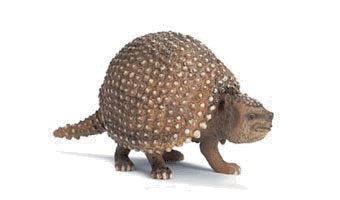
The extinct armored mammals known as “glyptodonts” are an intriguing group of giant armadillos. They are found as replicas easily from Schleich (above) labeled simply as Glyptodon, and from Safari (below), as Doedicurus.
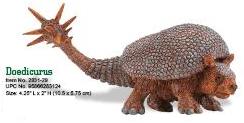
Bernard Heuvelmans writes in On the Track of Unknown Animals of the discoveries of glyptodont carapaces being used as shelters or for tombs of Pleistocene humans in South America. He notes that great controversy surrounds whether such demonstrates that the humans were there earlier than expected, or the glyptodonts survived later than they were thought to be extinct.
The obvious notion that the humans of 15,000 years ago could have merely been using fossils seems to have been considered by Heuvelmans, for he talks of the human bones and tools being found in association with charred and pierced glytodont bones.
Cryptozoologists have had an interest in the giant armadillos for a long time. Besides the ancient situation in South America, Sanderson heard rumors of more recent sightings from there in the 1970s, and within the last decade Brad LaGrange investigated a vague report of a giant armadillo seen in Florida.
Now comes word of the finds of a new species of glyptodont, and while not from Lara Croft, it is from a Croft, nevertheless.
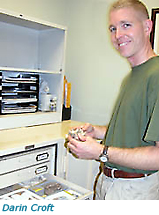
A paleontological dig in Chile at an altitude of more than 14,000 feet in the Andes has yielded fossils of an 18-million-year-old armored mammal. It appears to be one of the most primitive members of a family of extinct mammals known as “glyptodonts,” a group closely related to the modern-day armadillo.
Darin Croft from Case Western Reserve University, John Flynn from the American Museum of Natural History and Andre R. Wyss from the University of California Santa Barbara report the discovery and describe the mammal in the featured article for the Journal of Vertebrate Paleontology.
Researchers have named the animal, Parapropalaehoplophorus septentrionalis. They derived the first part of the name from the new mammal’s resemblance to a slightly younger animal from Argentina (Propalaehoplophorus). Septentrionalis means northern in Latin.
The newly discovered animal lived in the early Miocene epoch about 18 million years ago and its family went extinct about the time humans arrived in the New World.

P. septentrionalis is a member of the glyptodonts, a large group of extinct animals that lived almost exclusively in South America. (A few species reached North America several million years ago when the two continents were reconnected by the Panamanian land bridge.) They are recognized for their thick shells of hardened and immovable bony plates and their large, grooved teeth. But unlike their modern day armadillo relatives (who have thinner shells with movable plates and smaller, simple teeth), these animals could grow to the size of a small car and weigh as much at two tons.
According to Croft, the new species was relatively small for a glyptodont and is the first one found in Chile. “It would have looked like a cross between a tortoise and an armadillo, but of course is much more closely related to armadillos,” he said. He described P. septentrionalis as roughly the size of an African spurred tortoise, which is less than three feet long and weighs about 200 pounds.
The glyptodont was reconstructed from fossils of the jaw, shell, leg and backbone. These were compared with other known glyptodonts and with close glyptodont relatives. “These different skeletal parts all gave the same answer — this was a new species of glyptodont that had a greater number of primitive features than any other species,” said Croft.
“When we collected the fossil, we had no idea that it would turn out to be a new species. We knew that it would be an important specimen, given its completeness, but it was only after cleaning it and carefully studying it that we realized how unusual it was,” Croft said.
The P. septentrionalis fossil was found during a field expedition in 2004 to the Salar de Surire region. This area has yielded the Chucal fauna, the collective name given to the 18 fossil animal species from the region. This fauna includes armored mammals (armadillos and their relatives), marsupials (relatives of the opossum), rodents, frogs and many ungulates (hoofed animals).
Finding the new species was no easy task as the researchers encountered the thin air at the high altitude, scarce water and temperatures that plummeted as night fell. But these are not the conditions under which the glyptodont lived. According to Flynn from the American Museum of Natural History in New York City, “Our studies and plant work elsewhere on the Altiplano suggest that the region was at much lower elevation when these fossils lived, giving us new insights into the timing and rate of uplift of the high Andes.”
Flynn added that Chucal, at more than 14,000 feet above sea level, is the highest elevation vertebrate fossil site in the Western Hemisphere. The highest site in the world is much younger and is found in the Tibetan Plateau at an altitude of more than 15,000 feet.
Like other glyptodonts, P. septentrionalis probably spent a lot of its time grazing on ground vegetation in open areas, much like cows do today. This interpretation is supported by the presence of many other open habitat mammals at Chucal and the presence of plant fossils typical of such environments.
A description of the new mammal is found in the article, “A New Basal Glyptodontid and other Xenarthra of the Early Miocene Chucal Fauna, Northern Chile.” The research was undertaken in collaboration with the Field Museum of Natural History in Chicago and the Museo Nacional de Historia Natural and the Consejo de Monumentos Nacionales in Santiago, Chile. Research support came from the National Geographic Society, the National Science Foundation, and FONDECYT Chile.Press Release, December 12, 2007, Case Western University.
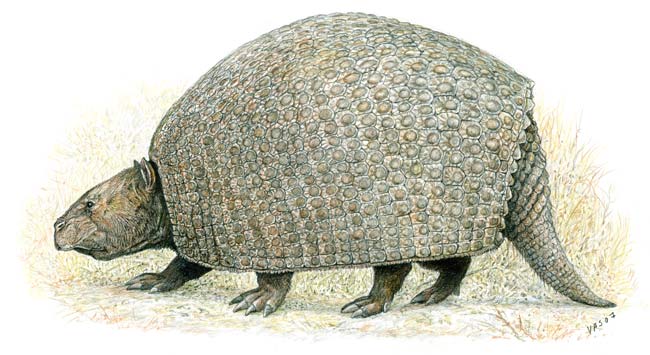
Parapropalaehoplophorus septentrionalis.
++++
Appreciation to The Dinosaur Farm for permission to use their copyrighted photographs of today’s replicas. If you decide to shop there, let them know in their “comments” box that you heard about them from Cryptomundo, so they understand the impact of cryptozoology – and continue to supply these replicas. (We get no financial benefit from such a referral, btw.)
Please donate to the International Cryptozoology Museum by sending your financial donations, unwanted or extra replica animals, or cryptozoology artifacts to Loren Coleman, Director, ICM, PO Box 360, Portland, ME 04112, or via any fiscal donations to PayPal at LColeman@maine.rr.com [Please note, the ICM is not a 501(c)3.]
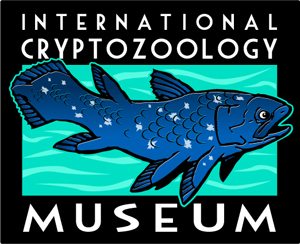
About Loren Coleman
Loren Coleman is one of the world’s leading cryptozoologists, some say “the” leading living cryptozoologist. Certainly, he is acknowledged as the current living American researcher and writer who has most popularized cryptozoology in the late 20th and early 21st centuries.
Starting his fieldwork and investigations in 1960, after traveling and trekking extensively in pursuit of cryptozoological mysteries, Coleman began writing to share his experiences in 1969. An honorary member of Ivan T. Sanderson’s Society for the Investigation of the Unexplained in the 1970s, Coleman has been bestowed with similar honorary memberships of the North Idaho College Cryptozoology Club in 1983, and in subsequent years, that of the British Columbia Scientific Cryptozoology Club, CryptoSafari International, and other international organizations. He was also a Life Member and Benefactor of the International Society of Cryptozoology (now-defunct).
Loren Coleman’s daily blog, as a member of the Cryptomundo Team, served as an ongoing avenue of communication for the ever-growing body of cryptozoo news from 2005 through 2013. He returned as an infrequent contributor beginning Halloween week of 2015.
Coleman is the founder in 2003, and current director of the International Cryptozoology Museum in Portland, Maine.










I was recently at Florida Natural History Museum in Gainesville, where they have fossils of many prehistoric mammals. The large glyptodont they have there is awesome. They have a couple of full-sized ground sloths too. One of them is HUGE. I’d say it was at least 12 or 13 feet tall.
All of the prehistoric mammals on display there are animals of which fossils have been found in Florida. The variety is amazing. I went specifically to see the Xenosmilus, a real bruiser of a sabertooth cat. I was aware of glyptodonts, of course, but I had never seen one displayed. The thing was nearly as big as a Volkswagen Beetle. Well, maybe that is a SLIGHT exaggeration, but it was really big.
I graduated from UF and I know exactly the sloth you’re talking about – it’s almost inconceivable that something that big actually existed. Wasn’t there some research several years back indicating that a few species of ground sloths may have survived into the 1500s on Cuba and Hispanola? If that’s true, I could see the possibility of these glyptodonts surviving longer than we suspect in South America.
That new glyptodont probably has the longest scientific name I’ve ever seen! About the recent giant armadillo sighting in Florida-it could possibly be an escaped South American giant armadillo. A lot of zoo animals and other exotics escaped during Hurricane Andrew and probably during the hurricane season of 2004.
Mighty handy armor with those giant flightless raptors running about back then.
The reason why some pygmy ground sloths survived untill late into the holocene at some west-indian islands is just because they were populated by humans only some thousand years ago, and not already in prehistoric times. The glyptodonts lived only on the continent, and were therefore exterminated by hunters much earlier.